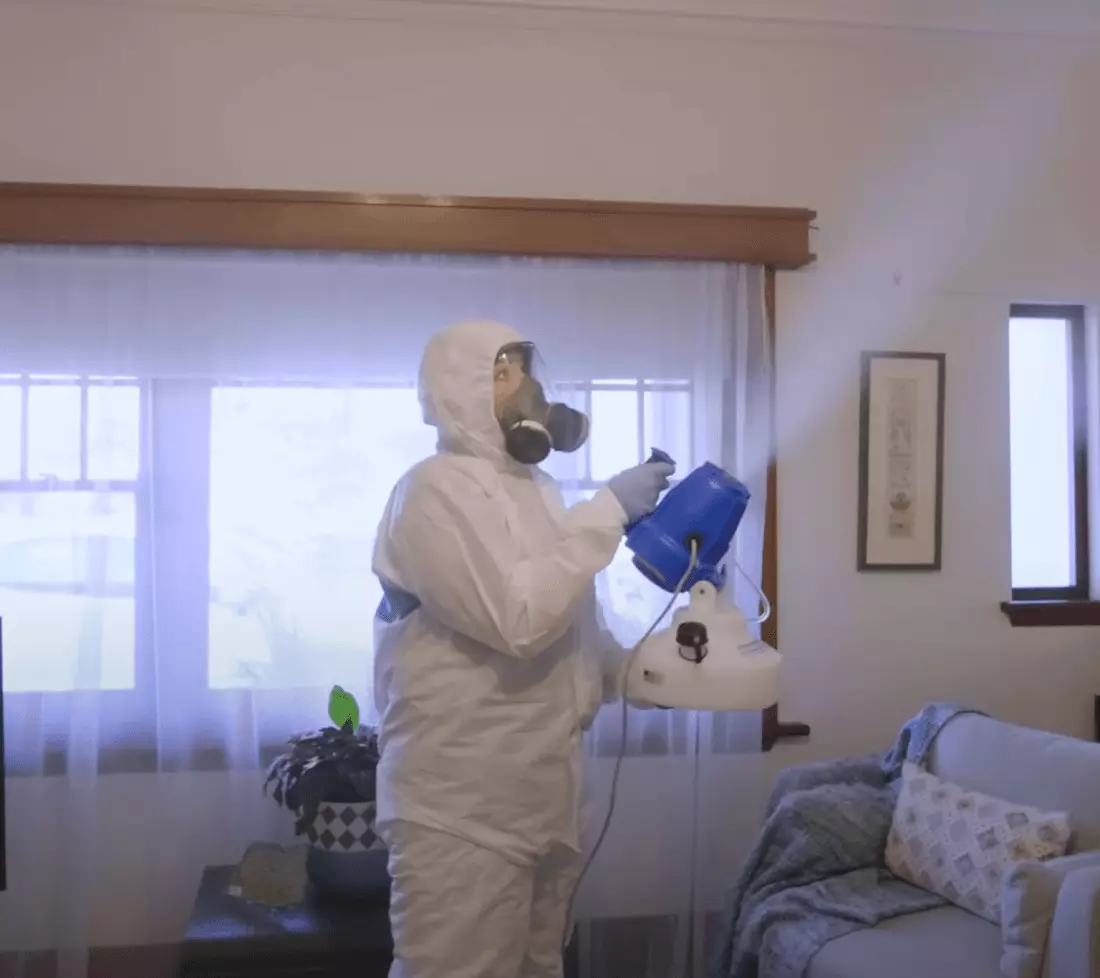
Mould growth is a common nuisance that can cause trouble in homes and buildings. The dark, damp corners of our living spaces provide the ideal breeding ground for these pests. Not only do they tarnish the aesthetics of our spaces, but they also pose potential health risks.
The challenge lies in effectively dealing with mould, especially in places like Australia, where humidity levels can be particularly conducive to its growth. Among the solutions that have emerged, fogging stands out as a potential remedy. Let’s explore why mould removers use this process for efficient mould removal.
How Does Fogging Work for Mould Removal?
Fogging involves the use of specialised equipment that releases a fine mist of mould-fighting substances. This mist reaches places that are often hard to access through traditional cleaning or mould removal methods. The process is straightforward yet effective, which makes it a valuable tool for professional mould removal.
There are two primary types of fogging: wet and dry. Wet fogging involves the dispersion of a liquid solution that can eliminate mould on contact. On the other hand, dry fogging releases a fine mist of dry particles that interact with the mould and neutralise it. Each type has its advantages, and the choice often depends on the severity of the infestation and the specific circumstances.
Is Mould Fogging Necessary?
Now, you might be wondering if mould fogging is a necessary step in the battle against mould. The answer isn’t always a definitive ‘yes’. While fogging can certainly be effective, it’s crucial to assess the extent of the mould problem before deciding on a solution. In some cases, simple cleaning and maintenance might suffice. However, when mould has extensively settled in, fogging can provide that extra punch needed to regain control over your living space.
Is Fogging for Mould Removal Safe?
Safety is paramount, especially when it comes to something as sensitive as our indoor environments. Rest assured, fogging can be safe when carried out by experts in mould removal who follow proper guidelines and use appropriate substances. The chemicals used in the process are typically chosen with care to minimise any potential harm to residents.
The Pros of Fogging for Mould Removal
When it comes to mould removal, fogging has some notable advantages that can make it an attractive choice. Some benefits that fogging offers are:
- Comprehensive Coverage: Fogging releases a fine mist that can penetrate even the most challenging-to-reach areas. It seeps into cracks, crevices and corners, which ensures that no spot is left untouched.
- Efficiency: Traditional mould removal methods often involve manual scrubbing and cleaning, which can be time-consuming and physically demanding. Fogging eliminates the need for extensive manual labour and makes the process more efficient.
- Airborne Spore Removal: Mould spores can become airborne and spread throughout your home, contributing to respiratory issues and exacerbating allergies. Fogging not only targets visible mould growth but also addresses airborne spores. As a result, it helps improve indoor air quality.
- Non-Toxic Options: Some fogging methods use non-toxic or minimally invasive chemicals. This means that you can opt for a mould removal process that aligns with your health and environmental concerns.
- Less Disruption: Traditional mould removal often involves moving furniture, creating temporary barriers and disrupting daily life. Fogging minimises this disruption, which makes it a convenient choice for busy households.
- Preventive Measures: Fogging doesn’t just eliminate existing mould; it can also be used as a preventive measure to keep future mould growth at bay. By treating areas prone to mould infestations, you can create a less hospitable environment for mould to thrive.
- Professional Expertise: Opting for professional mould removal services like The Mould Doctor ensures that fogging is carried out by experts who understand the nuances of different mould infestations. Their experience and knowledge can lead to more effective results.
However, fogging isn’t a one-size-fits-all solution. In cases of severe infestations, where mould has deeply infiltrated materials like wood or drywall, fogging might not provide a complete remedy.
Moreover, fogging should be seen as a part of a comprehensive approach that also addresses the root cause of mould growth, such as underlying moisture issues. It’s also essential to recognise that while fogging can remove mould, it might not entirely prevent its future resurgence.
Need Mould Gone? We’ve Got You Covered!
Fogging emerges as a valuable tool in the process of mould removal. While not a universal solution, it can play a significant role in creating a healthier indoor environment. Remember, in your battle against mould, The Mould Doctor stands ready to assist, ensuring that your home remains a safe haven for your family.
As a privately owned Australian company, we’ve honed our expertise in mould remediation across Victoria and New South Wales. Our commitment to unparalleled service and a ‘can do’ philosophy makes us the best mould remover in Melbourne , Sydney and Canberra. Our highly trained technicians don’t just remove mould; they also offer insights into building defects and contributing factors. We adhere to the esteemed IICRC world standards for mould remediation, which ensures that our methods are both effective and safe.
For more details about our services, contact us today.